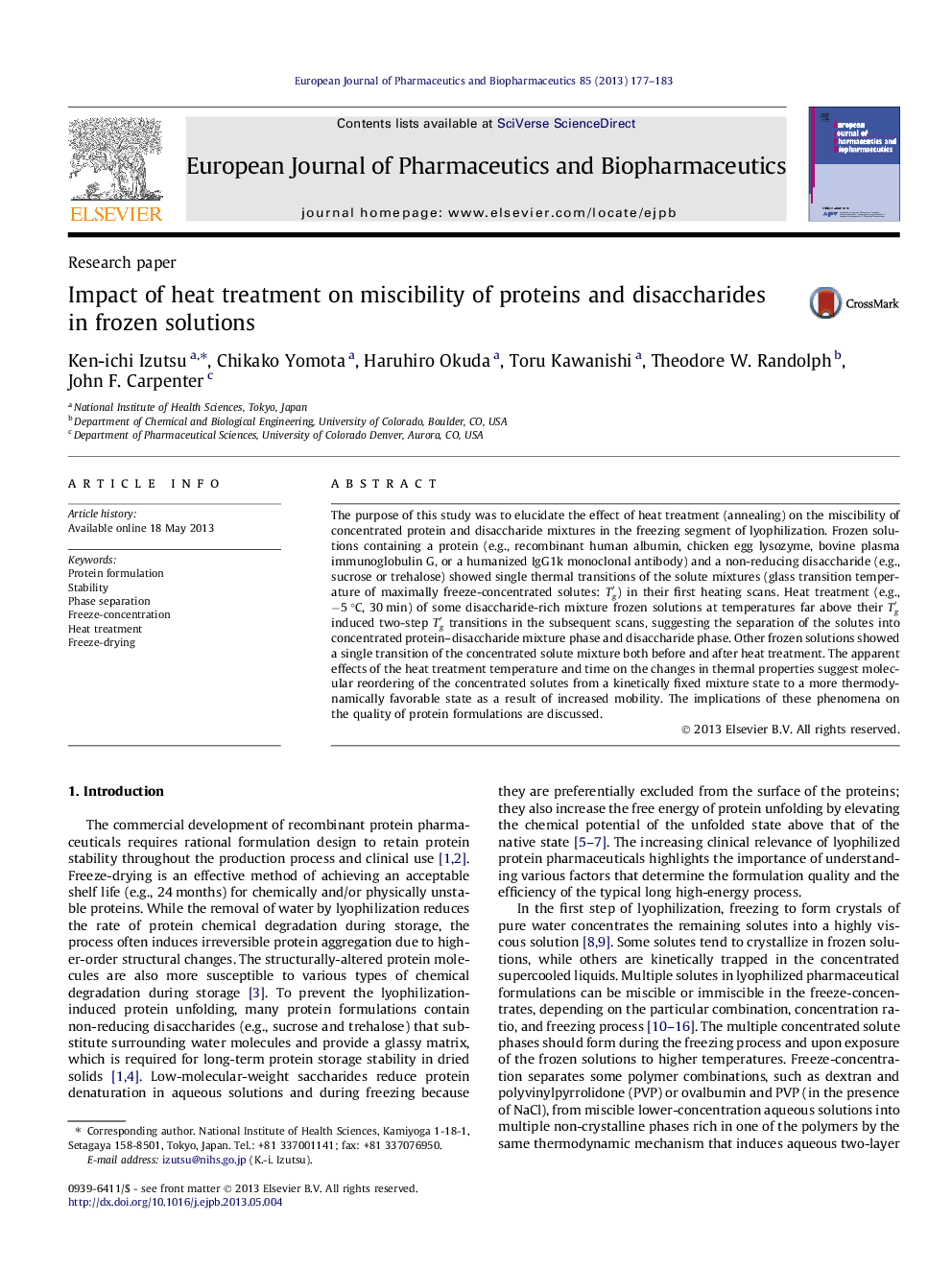| Article ID | Journal | Published Year | Pages | File Type |
|---|---|---|---|---|
| 2083648 | European Journal of Pharmaceutics and Biopharmaceutics | 2013 | 7 Pages |
The purpose of this study was to elucidate the effect of heat treatment (annealing) on the miscibility of concentrated protein and disaccharide mixtures in the freezing segment of lyophilization. Frozen solutions containing a protein (e.g., recombinant human albumin, chicken egg lysozyme, bovine plasma immunoglobulin G, or a humanized IgG1k monoclonal antibody) and a non-reducing disaccharide (e.g., sucrose or trehalose) showed single thermal transitions of the solute mixtures (glass transition temperature of maximally freeze-concentrated solutes: Tg′) in their first heating scans. Heat treatment (e.g., −5 °C, 30 min) of some disaccharide-rich mixture frozen solutions at temperatures far above their Tg′ induced two-step Tg′ transitions in the subsequent scans, suggesting the separation of the solutes into concentrated protein–disaccharide mixture phase and disaccharide phase. Other frozen solutions showed a single transition of the concentrated solute mixture both before and after heat treatment. The apparent effects of the heat treatment temperature and time on the changes in thermal properties suggest molecular reordering of the concentrated solutes from a kinetically fixed mixture state to a more thermodynamically favorable state as a result of increased mobility. The implications of these phenomena on the quality of protein formulations are discussed.
Graphical abstractFigure optionsDownload full-size imageDownload high-quality image (218 K)Download as PowerPoint slide
